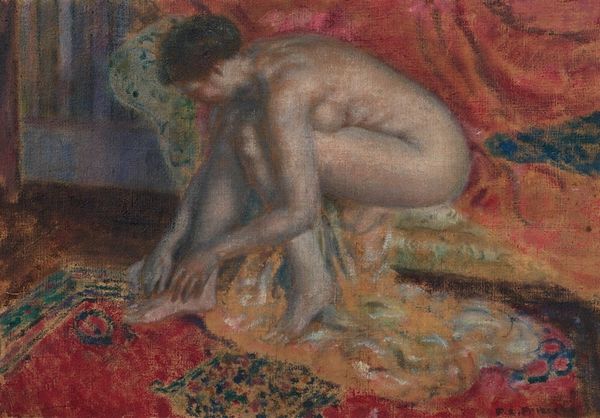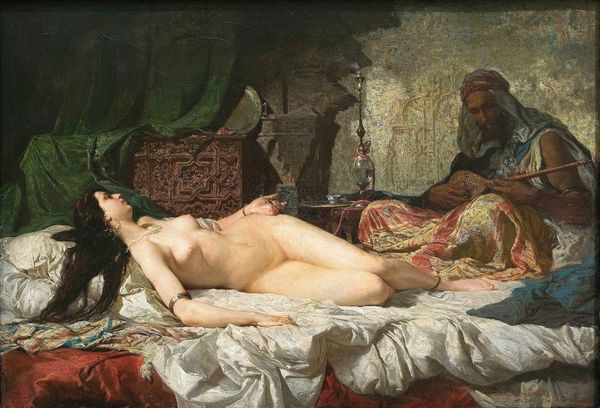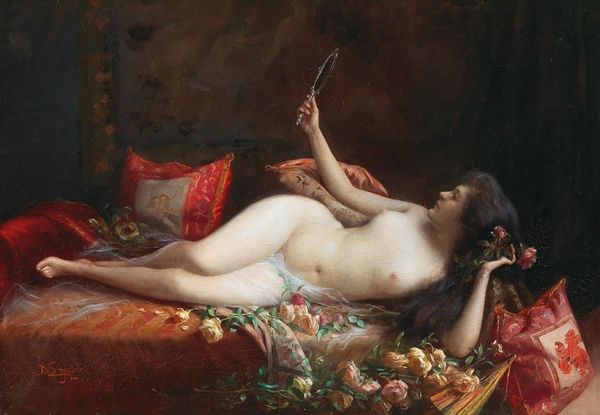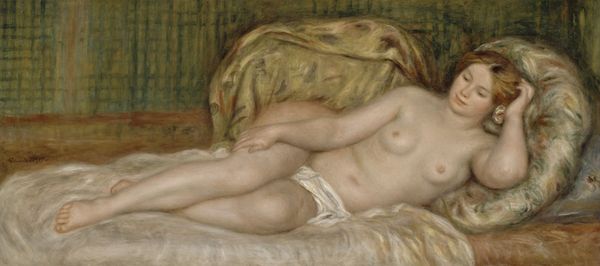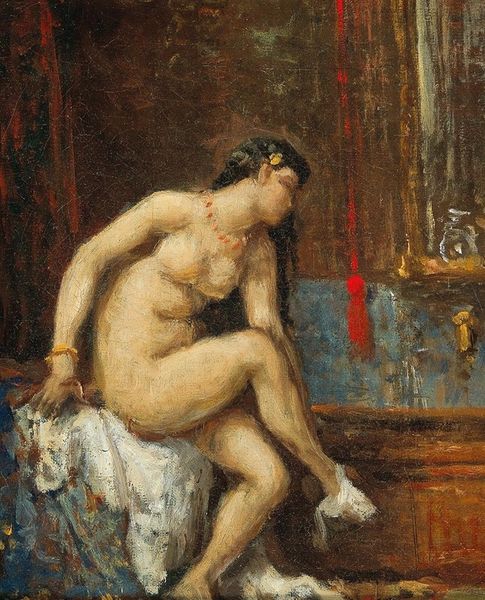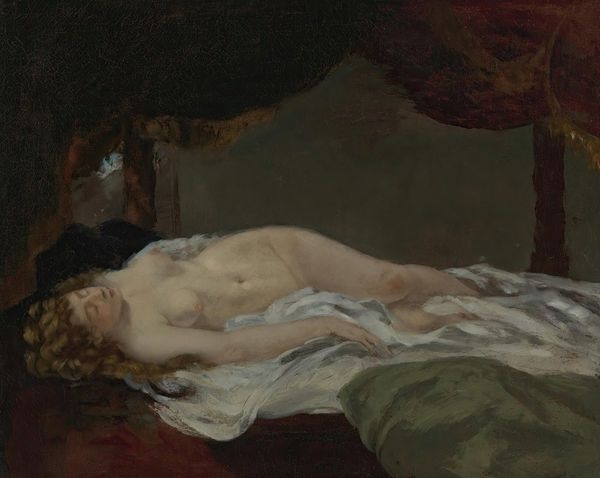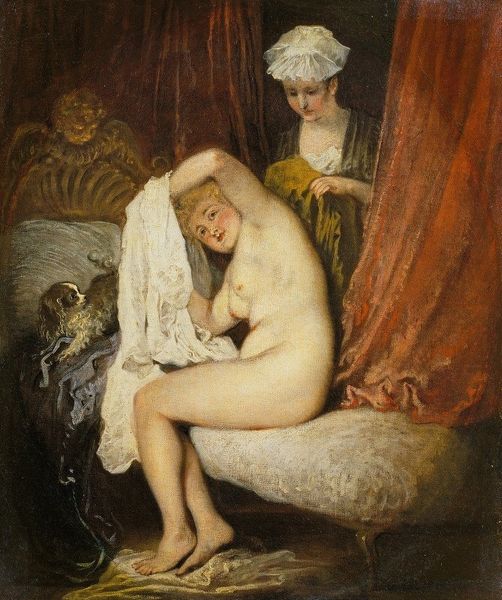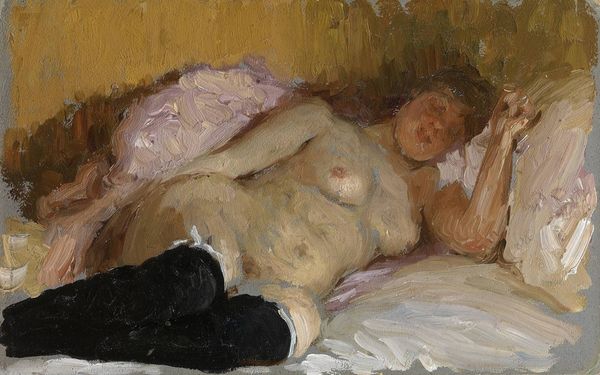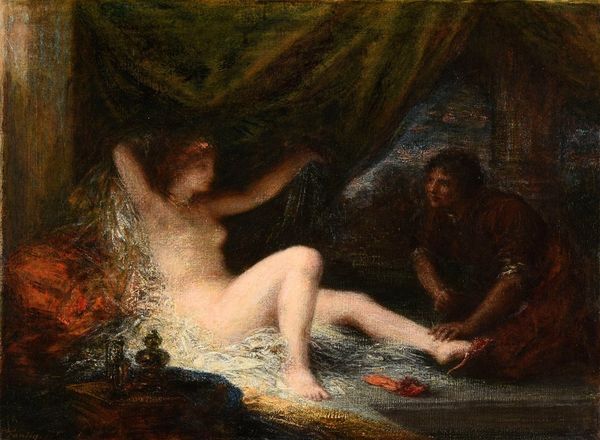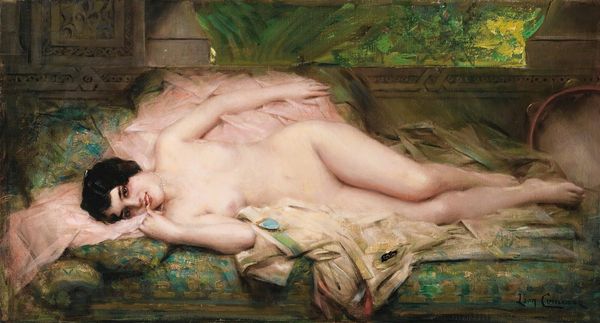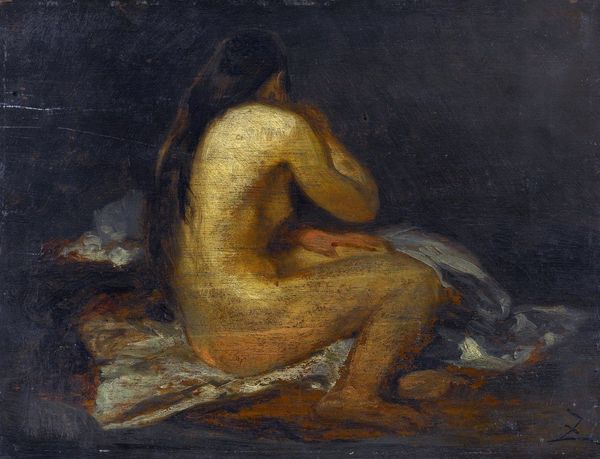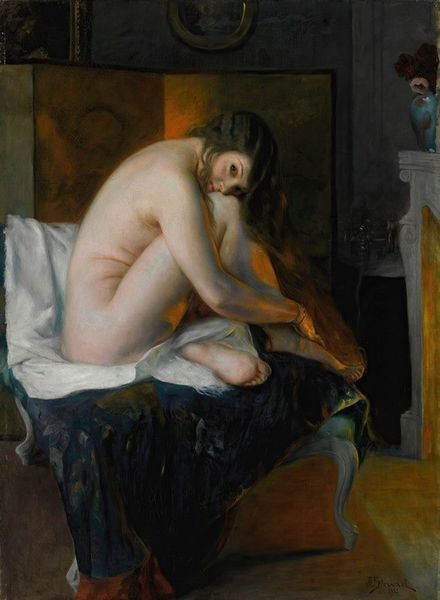
painting, oil-paint
#
portrait
#
painting
#
oil-paint
#
charcoal drawing
#
genre-painting
#
academic-art
#
nude
#
erotic-art
#
realism
Copyright: Public domain
Ipolit Strâmbu created "Cochetărie" with oil on cardboard at an unknown date. The bare-skinned woman gazing at her jewels might strike us as a timeless image of vanity and beauty. But if we delve into the Romania of Strâmbu's time, we might see the work as commenting on social structures of the time. The woman's semi-nudity and opulent jewels suggest a critique of wealth and class distinctions. Is Strâmbu highlighting the commodification of women in a society increasingly focused on material wealth? Or could the work be seen as self-consciously progressive in its defiance of conservative expectations around female behaviour? To truly understand this piece, we need to investigate the cultural and institutional contexts in which it was created. What was the role of the art academy in shaping artistic styles? How did social class and gender roles influence artistic expression? These are just some of the questions a historian might ask to unlock the social meaning of this painting.
Comments
No comments
Be the first to comment and join the conversation on the ultimate creative platform.
